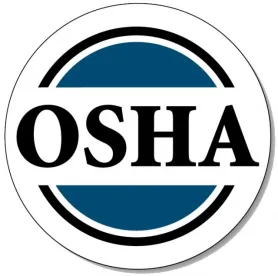On March 8, 2022, OSHA released an enforcement memorandum detailing a new initiative involving a short-term increase in highly focused inspections directed at hospitals and skilled nursing care facilities that treat or handle COVID-19 patients. The goal of this initiative is to ensure continued mitigation to control the spread of COVID-19 and future variants of the SARS-CoV-2 virus and protect the health and safety of healthcare workers who are at heightened risk for contracting the virus. This short-term initiative is a supplement to OSHA’s targeted enforcement under the COVID-19 National Emphasis Program (NEP), focusing on follow-up and monitoring inspections of hospitals and skilled nursing care facilities previously inspected or investigated by OSHA. It is also coming as yet-to-be released proposed permanent OSHA regulations to protect health-care workers from COVID-19 are under review at the White House’s Office of Information and Regulatory Affairs, which is typically one of the last steps before regulations are enacted.
Types of Facilities
The initiative will involve focused, partial-scope inspections occurring between March 9 and June 9, 2022. The facilities that could be inspected are those within the following four North American Industry Classification System (NAICS) codes:
-
622110 (General Medical and Surgical Hospitals)
-
622210 (Psychiatric and Substance Abuse Hospitals)
-
623110 (Nursing Care Facilities (Skilled Nursing Facilities))
-
623312 (Assisted Living Facilities for the Elderly)
Volume of Inspections
It is OSHA’s goal that 15 percent of all inspections per OSHA Region between March 9 and June 9 will be conducted under this initiative. Based upon the number of annual inspections OSHA conducted in 2019 and 2020, the agency is likely expecting to conduct approximately 800 to 1,250 inspections nationwide under this initiative. However, OSHA noted that its goal may be adjusted or terminated based on a number of factors.
Selection Process
OSHA may select facilities falling under one or more of the NAICS codes noted above if they meet one of the following criteria:
-
Follow-up inspection of any prior inspection for which a COVID-19-related citation or hazard alert letter was issued;
-
Follow-up or monitoring inspections for randomly selected closed COVID-19 unprogrammed activity, to include COVID-19 complaints and Rapid Response Investigations; or
-
Monitoring inspections for randomly-selected, remote-only COVID-19 inspections for which COVID-19-related citations were previously issued.
Onsite Inspections
OSHA intends to only conduct onsite inspections of facilities that currently treat or handle known COVID-19 patients. If a facility demonstrates that it does not treat or handle COVID-19 patients, the inspection will be closed as “records only.” However, if the facility transfers patients or residents exhibiting symptoms of COVID-19 offsite, it will still be subject to an onsite inspection.
During onsite inspections, in addition to following the Field Operations Manual and the COVID-19 NEP, OSHA has instructed its inspectors to do the following:
-
Determine if previous COVID-19-related violations or complaints have been corrected;
-
Determine if an adequate COVID-19 plan has been implemented;
-
Verify the existence and effectiveness of all control measures, including procedures for determining vaccination status, by reviewing relevant records;
-
Refer any vaccination-related deficiencies to the Centers for Medicare and Medicaid Services (CMS);
-
Evaluate the COVID-19 log and the Injury and Illness Logs (OSHA 300 Log, OSHA 300A Summary, and any applicable OSHA 301 Incident Reports) for calendar years 2020, 2021, and 2022, if available, to identify work-related cases of COVID-19;
-
Review the facility’s procedures for conducting hazard assessments and protocols for use of personal protective equipment (PPE);
-
Conduct a limited records review of the employer’s respiratory protection program (e.g., written respiratory protection program and fit tests, medical evaluations, and training records for interviewed employees); and
-
Perform a limited, focused walkaround of areas designated for COVID-19 patient treatment or handling (common areas, walkways, and vacant treatment areas where patients have been or will be treated), including performing employee interviews to determine compliance.
The walkaround portion of inspections under this initiative should be more limited than a usual OSHA inspection – limited in scope and focused on areas of potential non-compliance related to COVID-19. However, once OSHA is at a facility, it should be assumed that any alleged violation in plain sight could be the subject of a citation.
Applicable OSHA Requirements
Two years into the pandemic, it should be understood that several OSHA standards may apply to COVID-19-related hazards. In addition to the General Duty Clause, OSHA provided the following list of general industry standards applicable to infectious diseases, such as COVID-19, including the following:
-
29 CFR Part § 1904, Recording and Reporting Occupational Injuries and Illness
-
29 CFR § 1910.132, General Requirements-Personal Protective Equipment
-
29 CFR § 1910.134, Respiratory Protection
-
29 CFR § 1910.1020, Access to Employee Exposure and Medical Records
-
29 CFR § 1910.502(q)(2)(ii) and (q)(3)(ii)-(iv), Healthcare ETS COVID-19 Recordkeeping
-
29 CFR § 1910.502(r), Healthcare ETS COVID-19 Reporting
Preparing for an Inspection
If your facility falls within one of the NAICS codes listed above, it is important to be more prepared than usual for an OSHA inspection over the next few months. In addition to confirming that your COVID-19 protocols, policies, and procedures are in place, effective, and being complied with, it is also important to dust-off your facilities plan for an unannounced onsite inspection. This includes knowing who will greet the OSHA inspector, who can or should accompany the inspector on a walkaround, who will take notes and document the inspection, and who will be in charge of responding and providing documents to the inspector, among many other considerations. OSHA inspectors can show up with little or no warning, so having a plan in place ahead of time that will provide OSHA with a good first impression and best protect your facility is invaluable.




 />i
/>i

